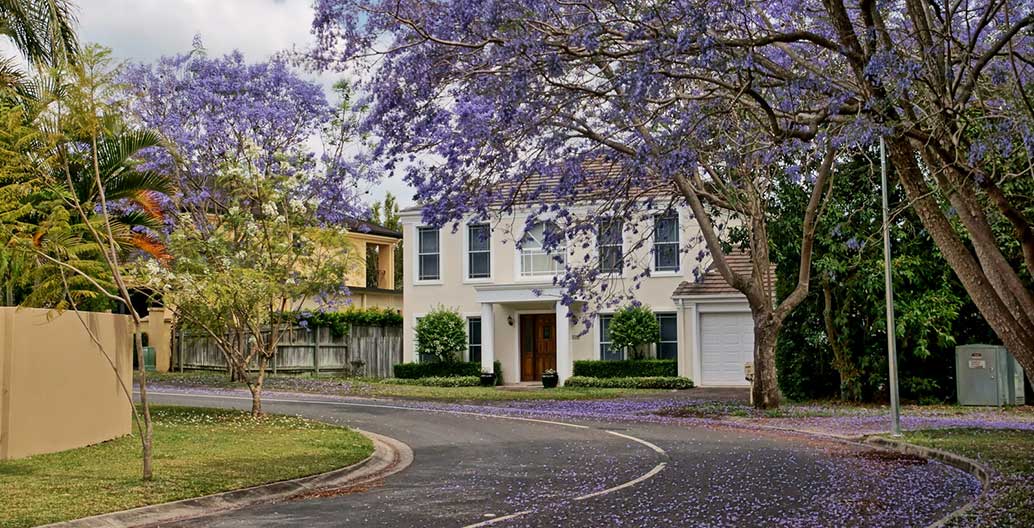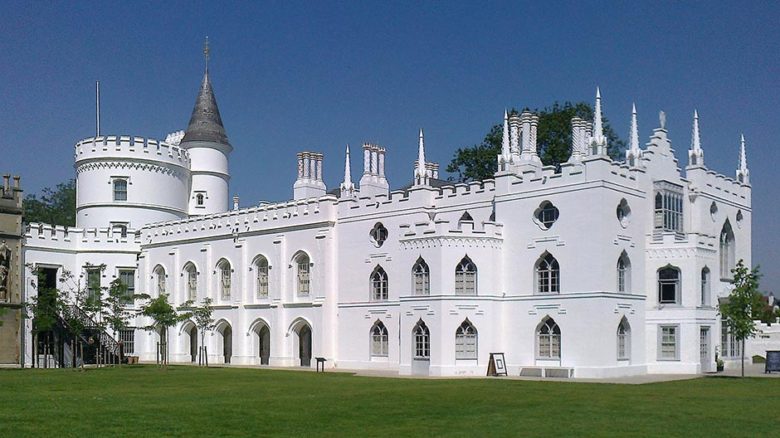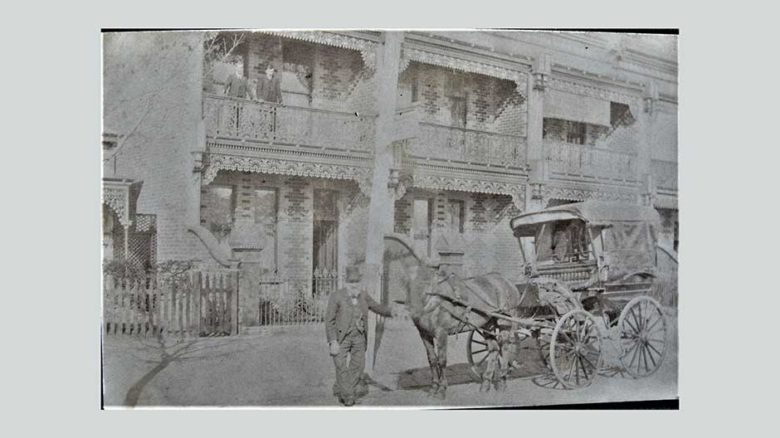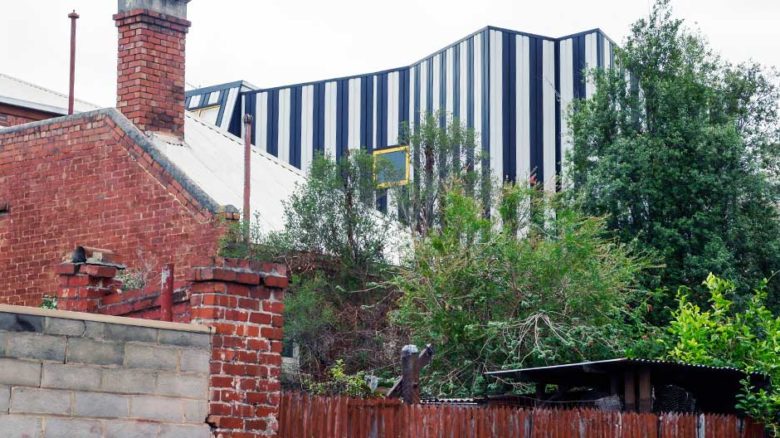
Suburbanism: for most of us, the ’burbs are home; it’s time to celebrate them
While urban professionals bemoan its “placelessness”, suburbia will be with us as long as populations grow. A reassessment of this much-maligned urban form is long overdue.
[This is an abridged extract of Leon van Schaik and Nigel Bertram’s recent book Suburbia Reimagined: Ageing and Increasing Populations in the Low-Rise City (Routledge 2018). Click here to purchase a copy from the Uro Publications bookshop]
Many historians regard the mid- to late 20th century as the age of the suburb, although in defining that age none of them give the suburb equal weight to the city centre. We think the relationship between suburb and city needs a new look.
Historians who we admire frame the project for us, even as we note their blind spots. In his 1998 book, Cities in Civilisation, geographer and town planner Peter Hall (1932–2014) waits until page 965 to begin his discussion of the suburb. There he asserts that the suburb “began in North America, the UK and Australia in the 1950s … and spread to all of Western Europe, even [our italics] Italy and Spain… ”. We note the tone of surprise and we challenge the history. The suburb began much earlier than this. Architect and theorist Mario Gandelsonas looks a little more closely and argues that the “opposition between city and suburb” emerges forcefully following the Second World War, even though, “in the US suburbs can be dated to 1815 in Boston, Philadelphia and New York … as people pursued the symbolic ‘house in the country’… ”.
This urbanite dream of “a house in the country” may be a peculiarly Anglo-Saxon ideal – or so argued Raymond Williams. In his book The Country and the City, He pointed out that every Frenchman dreams of living in Paris, while every Londoner goes to sleep longing to be in the country. Actual examples of this bucolic/urban ideal emerge in England shortly before they do in North America. Horace Walpole built Strawberry Hill, his dream country house, in Twickenham outside London, moving there in 1749. Once settled, his daily routine included an afternoon trip to the city centre, presenting an exalted ideal of suburban living. As TH White records in his book The Age of Scandal, Walpole recorded beginning his day with a late breakfast, then directing works on his house and garden, departing in a “light carriage” to go to his city centre club and return for dinner by four o’clock that afternoon. Thomas Jefferson began building Monticello in 1768, arguably the apex of the North American ideal of a house in the country.
European invasion and settlement of Australia began in 1788, but the way it was settled presents another challenge to the idea that suburban living began after the Second World War. Melbourne’s suburban culture has been celebrated and exported around the world through the TV series Neighbours (first broadcast in March 1985), corroborating the post-1950s view of suburbia, yet the “city” of Fitzroy was subdivided in 1850, Melbourne’s first suburb. It had an 18th-century cast to it, in that it housed a complete range of income earners. Subsequently, more demographically uniform suburbs were the engines by which at the end of the 19th century, 80 percent of Australia’s population was living in the capital cities of the various colonies that were to comprise the Commonwealth of Australia. While the dream of a rural haven impelled northern development of the “garden city” kind, in Australia the impulse was more political, driven by individual desires to be as independent of the state as possible. The equal rights ideals of the Chartists were forcefully exported to Australia after they were supressed in England, and lie as the usually unstated (Hugh Stretton is the exception) political bedrock at the core of our suburbia-philia.
Such a love is unusual. As etymology alone indicates, cities and suburbs predate the English language, finding their origins in French and in Latin. Their core meanings are described in the Shorter Oxford English Dictionary: city “2. a large town, spec. a town created a ‘city’ by charter, esp containing a cathedral”; and suburb “1. a district especially residential lying immediately outside or (now) within the boundaries of a city”; “2. the parts about the border of any place, the outskirts”. Both words, city and suburb, come into the language in its Middle English form and in the same period (1150–1349). By 1350–1469 “a suburban” means a resident of a suburb, and “outer suburb” is in use. “Suburban” meaning “of a suburb” follows in 1600–1659, well before Walpole made his move. “Suburbicarian” and “suburbanity” emerge in “M19” – 1830–1869 when Dickens was writing about suburban living; “suburbanism”, “suburbanite” and “suburbia” in “L19” join them in 1870–1899. “Suburbanise” arrives in “L19” too, while “suburbanisation” arrives in “E20” (1900–1929). This verb is preceded by “the adjective suburban” meaning “narrow minded, provincial” (1800–1829). None of this will surprise readers of English novels; many will recall in Great Expectations (1862) Charles Dickens’ description of Mr Wemmick’s suburban “castle”, a minute “republic of pleasure” replete with tiny moat and drawbridge. So pervasive are the negative connotations of the suburb that a new book surveying the suburb in literature and richly noting Mr Wemmick’s creation ignores its lesson of individual fulfilment. The book concludes with a bleak dismissal of life as lived in the suburbs, claiming that they engender a “profound sense of placelessness”. “Surely,” writes a reviewer, “there is scope for a more positive reading of (the suburbs)?” Not in the mind of Australian architect and theorist Robin Boyd, even though he made significant contributions to the designing of houses in suburbia. The title of his 1961 book is The Australian Ugliness and it seems to be imbued with the same old-world disdain. Like so many Australian elites he was, as observed by cultural historian Paul Fox, torn between an allegiance to the old culture of England and the new culture of the US. While his disgust for suburban strips comes from his British heritage, his new world allegiances brought forth his Clemson House (1959–1960), which is all optimism and rethinking domestic order with, for example, a combined library/laundry room seeking to unify intellectual and menial chores.

Horace Walpole's Strawberry Hill, Twickenham. From 1749, Walpole commuted daily to London. Image: Chiswick Chap, Wiki Commons

An early Melburnian suburbanite, Fitzroy circa 1900. Image: Public domain

Rear view of Edmond and Corrigan's Niagara Galleries, Richmond, Melbourne. Image: Trawny
Such polemics conceal rich continuities. The poison is hidden in plain sight in the language of the Oxford Dictionary of Architecture (ODA, 1999). The definition of “suburb” begins benignly, if pleading a special case as the OED etymology shows: “1. Residential areas the style of which evolved from ‘C19’ ideals associated with the Arts and Crafts and Aesthetic Movements and with the Domestic Revival and Garden Suburb… (from 1877, 1906)”, but continues: “… though very often a travesty, based more on commerce than aesthetics”. In its second definition, the ODA describes “suburb” as a pejorative term used by modernists to promote high-rise urban developments.
Few new-world thinkers or urban theorists transcend this polemic, although some artists do, by looking hard at what is actually there, most notably Ed Ruscha in Los Angeles in the mid-1960s when he documented Sunset Strip (among other features of suburbia, such as carparks and petrol stations) and Howard Arkley in Melbourne, who created a painterly language that presented the sublime innate in ordinary suburban houses in the 1980s and 1990s. Among urbanists, Gandelsonas has a go at a positive account of suburbia in his book X-Urbanism, using a term with a relatively new coinage, but as we shall see he is soon sucked back into the existential despair of ODA. The term he uses is “exurban, of or belonging to a district outside a city or town” (1900–1929) and it is followed by “exurb, a prosperous zone beyond suburbs M20” (1930–1969). The latter surely describing Walpole’s Twickenham in 1750…
The relatively open fabric of exurbia excites transport planners and attracts major roads that circle cities and their suburbs. Often, like the North Circular Road (London, 1920s), these are surrounded by enterprises. Whereas in the US such roads are freeways and are called “Beltways” linking nodes of concentrated urban activity, they form edge cities. Of these, there are dim resonances around Australian city cores as they swell. Melbourne covered 3000 square kilometres in the 1980s, 7500 thousand square kilometres 30 years later. Exurbia is ever-receding to the horizon, suburbia filling its interstices.
Before he gets sucked back into the usual architectural polemic, Gandelsonas describes suburbia and exurbia as acting to ‘“transform the entire territory into a field, a metaphorical garden (across which compete) suburb/centre city, residence/workplace…”. Unfortunately, by page 35 of his book, Gandelsonas is lamenting that this field is “neither about the architectural object nor about the plan”, thus echoing the ODA view that in suburbia “architectural quality (has) evaporated”. We suspect that this attitude stems from the 20th-century history of eastern and mid-western cities in the US – “ten cities that have suffered uniquely from the disappearance of work” as Hall put it in Cities in Civilisation. Cities that through catastrophic devaluing of their centres have lost their middle class and “dough-nutted”, trapping poverty ghettoes in a manner unknown elsewhere in the developed world. Maybe analysis is taking place at too high a level of abstraction. Would Gandelsonas have been so dismissive if he had examined what happens in individual homes and yards? We think not. And we argue that it is time that thinking about suburbs took a fresh look – as artists have done – at what is actually happening in suburbs. Denise Scott Brown and Robert Venturi’s Learning from Las Vegas (1972) pioneered such looking by architects, but the lessons were applied as a corrective to architectural designing, not to rethinking suburb/city interfaces.
What causes the failure to look hard at suburban actualities? We agree with Mike Davis’ reading in City of Quartz that it is middle-class fear, a fear of diminishing quality of life that drives elite attitudes to suburban growth. Not only are there threats to “downtown” – threats that West Coast cities have weathered, as indeed have Australian and Asian cities – but new suburbs impinge upon established ones and, in Los Angeles, upset “Westside elites”. And these fears are shared by most of their professional advisers, fruitlessly opposing “sprawl”, a condition that is with us as long as populations grow. Energy spent stopping growth is better, we argue, spent channelling and enriching the elements within the “metaphysical garden” that contains city, suburb and exurb.
Even in the less industrialised environment of Australian housing tracts there are echoes of the ruthless attitudes to site that characterised the four massive Levittown (formerly Island Trees) tracts of the 1950s. Here as there, then, sites are bulldozed into submission, but here as there, an “urban forest” phenomenon comes into play as suburbs mature. This idea is echoed by Adelaide-based Hugh Stretton in his book Ideas for Australian Cities. Stretton was a historian who argued for the positive (Chartist) political consequences of owning your own piece of land. He also championed the quarter acre block’s capacity for self-sustaining food production, the latter making a strong argument for the sustainability of suburban urban form.
Even though Australian houses today typically cover 80 percent of the site, 50 percent of them have solar energy arrays installed. Suburbs can be promoted as engines in an adaptive strategy for global warming. Stretton’s book was part of a wide shift in Australian culture, as writers for theatre, for example Barry Dickens working in a milieu that included architect Peter Corrigan, began to explore suburban living. By 2004, Canberra-based writer Marion Halligan is asserting that suburbia is a great achievement…
Our research in Melbourne, running across 7500 square kilometres of exurbia and suburbia, revealed dim resonances of well-known urban models (garden city, Radburn inversion, neo-rationalist new-town…) faintly discernible in the subdivisions of different tracts. Gandelsonas’ drawings reveal that there are breaks and fissures in the seemingly endless grain of the US grid city. Observation revealed that these were points of differentiation between socioeconomic groups and were also the locations of street-based services. Taking a bird’s eye view it is easy to regard what is seen as evidence of “placelesssness”, but as Terence Lee’s pioneering research into what he called the spatial schemata established in people’s daily routines revealed, people use journeys of all kinds not for efficient expedition of functional tasks, but for the structuring of meaning in their lives. Most journeys involve deviations that include sites or scenes of personal interest to the traveller…
Place is individually constructed and theoreticians should avoid sweeping generalisations about urban and suburban form.
–
Nigel Bertram is a Director of NMBW Architecture Studio, Melbourne and Practice Professor of Architecture in the Faculty of Art Design and Architecture at Monash University.
Leon van Schaik AO is Innovation Professor of Architecture at RMIT University, where he holds an Innovation Chair in Design Practice Research.
This is an abridged extract of Leon Van Schaik and Nigel Bertram’s recent book Suburbia Reimagined: Ageing and Increasing Populations in the Low-Rise City (Routledge 2018). Click here to purchase a copy from the Uro Publications bookshop.


